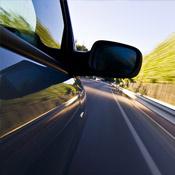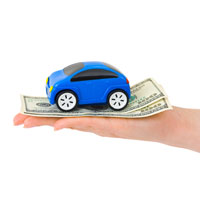8 Discounts Drivers Miss when Buying Insurance Online for a GMC Savana 1500 Van

Trying to find low-cost insurance for your GMC Savana 1500 Van can turn out to be difficult, but you can follow the following methods to save time. There is a right way and a wrong way to shop for car insurance and you need to know the best way to compare rates on a GMC and find the cheapest rates.
If you are paying for car insurance now, you should be able to cut costs considerably using these tips. Pricing the lowest cost protection is quite easy. Although drivers do need to know the methods companies use to determine prices.
To get , there a variety of ways to compare quotes from different companies. By far the easiest way to find cheaper GMC Savana 1500 Van rates is to perform an online rate comparison. It is quite easy and can be accomplished in just a few minutes using one of these methods.
- The recommended way consumers can make multiple comparisons is to use a rate comparison form click to view form in new window. This style of form prevents you from having to do repetitive form entry for every car insurance company. Completing one form gets coverage cost estimates from car insurance companies with the best prices. Just one form and you’re done.
- A slightly less efficient method to get quotes online requires a trip to each company website and request a quote. For sake of this example, let’s say you want to view quotes from Nationwide, State Farm and GMAC. In order to compare rates, you need to spend time on each company’s site to enter the same coverage data repeatedly, which explains why we recommend starting with the first method.
To view a list of companies in your area, click here.
- Even if you have time, the least recommended method to get comparison rates is driving to local insurance agencies. Doing it all online has reduced the need for local agents unless you’re the type of person who wants the advice and guidance only provided by licensed agents. Although, it is possible comparison shop online but buy the policy through an agent.
Take whichever approach you prefer, but make darn sure you compare apples-to-apples coverages and limits for every quote you compare. If you compare higher or lower deductibles it will be very difficult to determine which rate is truly the best. Just a small difference in limits could mean much higher rates. And when price shopping your coverage, making a lot of price comparisons increases your odds of finding a lower rate than you’re paying now. Some companies don’t provide quotes online, so it’s necessary to compare prices from them as well.
Do I need an insurance agent?
Many drivers still like to get professional advice from a licensed agent and that can be a great decision A nice benefit of comparing insurance prices online is you may find cheaper auto insurance rates and still have a local agent.
For easy comparison, once you complete this form (opens in new window), your insurance coverage information gets sent to local insurance agents who will give you bids for your car insurance coverage. There is no need to find an agent because prices are sent directly to you. You can find lower rates without a big time investment. If you need to compare prices from a specific insurance company, you can always navigate to their website and submit a quote form there.
Finding a good insurer requires more thought than just the premium amount. Below are some questions you should ask.
- Is there a local claims center?
- How much can you save by raising your physical damage deductibles?
- Can they provide you with a list of referrals?
- Is the agency involved in supporting local community causes?
- How often do they review policy coverages?
- Is the coverage adequate for your vehicle?
If you are wanting to purchase car insurance from a reputable agency, it’s important to understand the types of agencies and how they are distinctly different. Car insurance agents are categorized either independent or captive depending on the company they work for.
Captive Car Insurance Agents
Captive insurance agents can only provide pricing for a single company such as State Farm, AAA, Farmers Insurance or Allstate. They usually cannot place coverage with different providers so they are skilled at selling on more than just price. Captives are highly trained on their company’s products and that allows them to sell at a higher price point. Some people will only buy from captive agents partially due to the brand legacy and strong financial ratings.
Independent Agents
These type of agents are not employed by any specific company so as a result can place your coverage through lots of different companies and possibly get better coverage at lower prices. If you are not satisfied with one company, they simply move your policy to a different company and you stay with the same agent. When searching for an agent, you will definitely want to contact a few independent agents to have the most options to choose from. Most also write with additional companies that you may not be familiar with that can offer cheaper rates than bigger companies.
To find insurance agencies near you, click to find a local insurance agent.
Upon getting good answers to any questions you may have in addition to an acceptable price estimate, you’ve probably found an auto insurance agent that meets your needs to provide car insurance coverage. Just keep in mind you are able to terminate your policy any time you want so never feel that you are obligated to any specific company for any length of time.
Specifics of your car insurance policy
Having a good grasp of a car insurance policy can be of help when determining the right coverages for your vehicles. Policy terminology can be difficult to understand and nobody wants to actually read their policy.
Medical expense coverage
Medical payments and Personal Injury Protection insurance pay for immediate expenses such as chiropractic care, dental work and pain medications. They are often used to fill the gap from your health insurance plan or if you lack health insurance entirely. It covers not only the driver but also the vehicle occupants and will also cover if you are hit as a while walking down the street. PIP is not universally available and may carry a deductible
Auto liability
This will cover damage or injury you incur to other people or property that is your fault. Liability coverage has three limits: bodily injury for each person, bodily injury for the entire accident, and a limit for property damage. As an example, you may have values of 50/100/50 that translate to $50,000 bodily injury coverage, $100,000 for the entire accident, and $50,000 of coverage for damaged propery.
Liability can pay for claims like bail bonds, court costs, repair costs for stationary objects and legal defense fees. How much liability coverage do you need? That is your choice, but it’s cheap coverage so purchase as much as you can afford.
Uninsured or underinsured coverage
Your UM/UIM coverage gives you protection when the “other guys” do not carry enough liability coverage. Covered losses include injuries sustained by your vehicle’s occupants as well as damage to your GMC Savana 1500 Van.
Since many drivers only carry the minimum required liability limits, it only takes a small accident to exceed their coverage. For this reason, having high UM/UIM coverages is important protection for you and your family.
Collision protection
Collision coverage pays to fix your vehicle from damage resulting from a collision with an object or car. You will need to pay your deductible and the rest of the damage will be paid by collision coverage.
Collision coverage pays for things such as driving through your garage door, damaging your car on a curb, crashing into a ditch and colliding with a tree. Collision coverage makes up a good portion of your premium, so consider removing coverage from vehicles that are older. Drivers also have the option to increase the deductible to get cheaper collision coverage.
Comprehensive protection
This coverage will pay to fix damage from a wide range of events other than collision. You first must pay your deductible then the remaining damage will be covered by your comprehensive coverage.
Comprehensive can pay for claims like rock chips in glass, damage from getting keyed, damage from flooding, hitting a deer and damage from a tornado or hurricane. The maximum amount you’ll receive from a claim is the market value of your vehicle, so if the vehicle is not worth much consider dropping full coverage.


